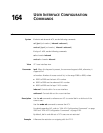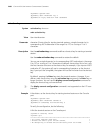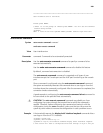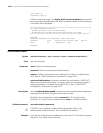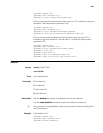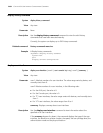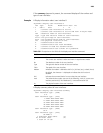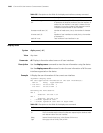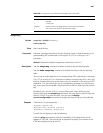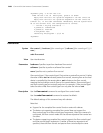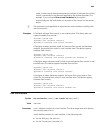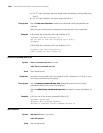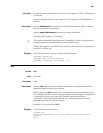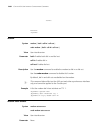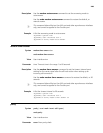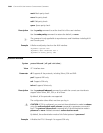
2457
escape-key
Syntax escape-key { default | character }
undo escape-key
View User interface view
Parameter character: Specifies the shortcut key for aborting a task, a single character (or its
corresponding ASCII code value in the range 0 to 127) or a string of 1 to 3
characters.
default: Restores the default escape key combination <Ctrl+C>.
Description Use the
escape-key command to define a shortcut key for aborting tasks.
Use the undo escape-key command to disable the shortcut key for aborting
tasks.
You can use a single character (or its corresponding ASCII code value in the range
0 to 127) or a string of 1 to 3 characters to define a shortcut key. But in fact, only
the first character functions as the shortcut key. For example, if you enter an ASCII
code value 113, the system will use its corresponding character q as the shortcut
key; if you input the string q@c, the system will use the first letter q as the shortcut
key.
By default, you can use <Ctrl+C> to terminate a task. After defining a new
shortcut key using the escape-key command, the new shortcut key will take the
place of <Ctrl+C> to abort the task. You can use the display
current-configuration command to display the shortcut key you have defined.
Example # Define <a> as the escape key.
<Sysname> system-view
[Sysname] user-interface console 0
[Sysname-ui-console0] escape-key a
To verify the configuration, do the following:
# Use the ping command to check the reachability of the device with the IP
address of 192.168.1.49 and use the -c argument to specify the number of the
ICMP echo packets to be sent as 20.
Userlevel User authority or level: 0 for visit, 1 for monitor, 2 for system, and 3 for
manage.
+ Current user
Location Location of the user logging from the current user interface
F The current user works in asynchronous mode
Table 636 Description on the fields of the display users command
Field Description



